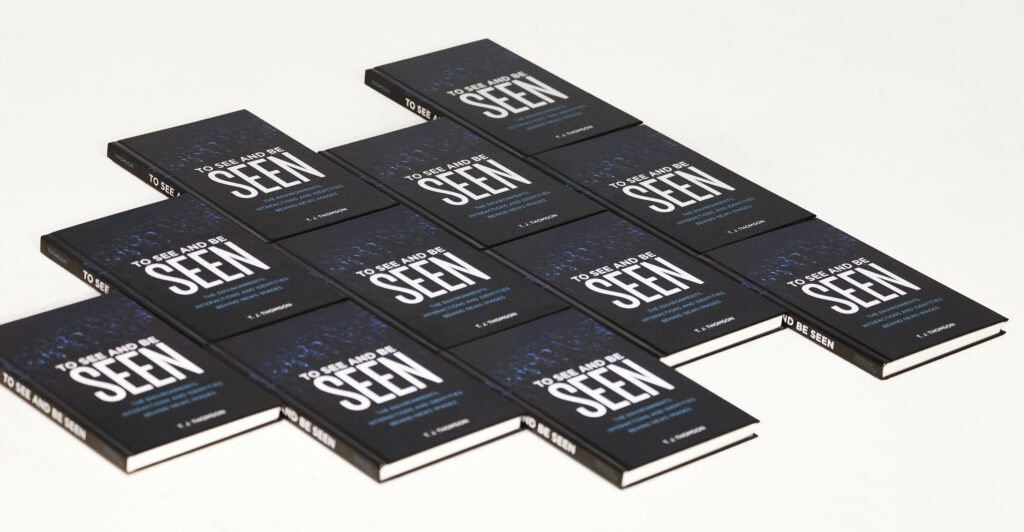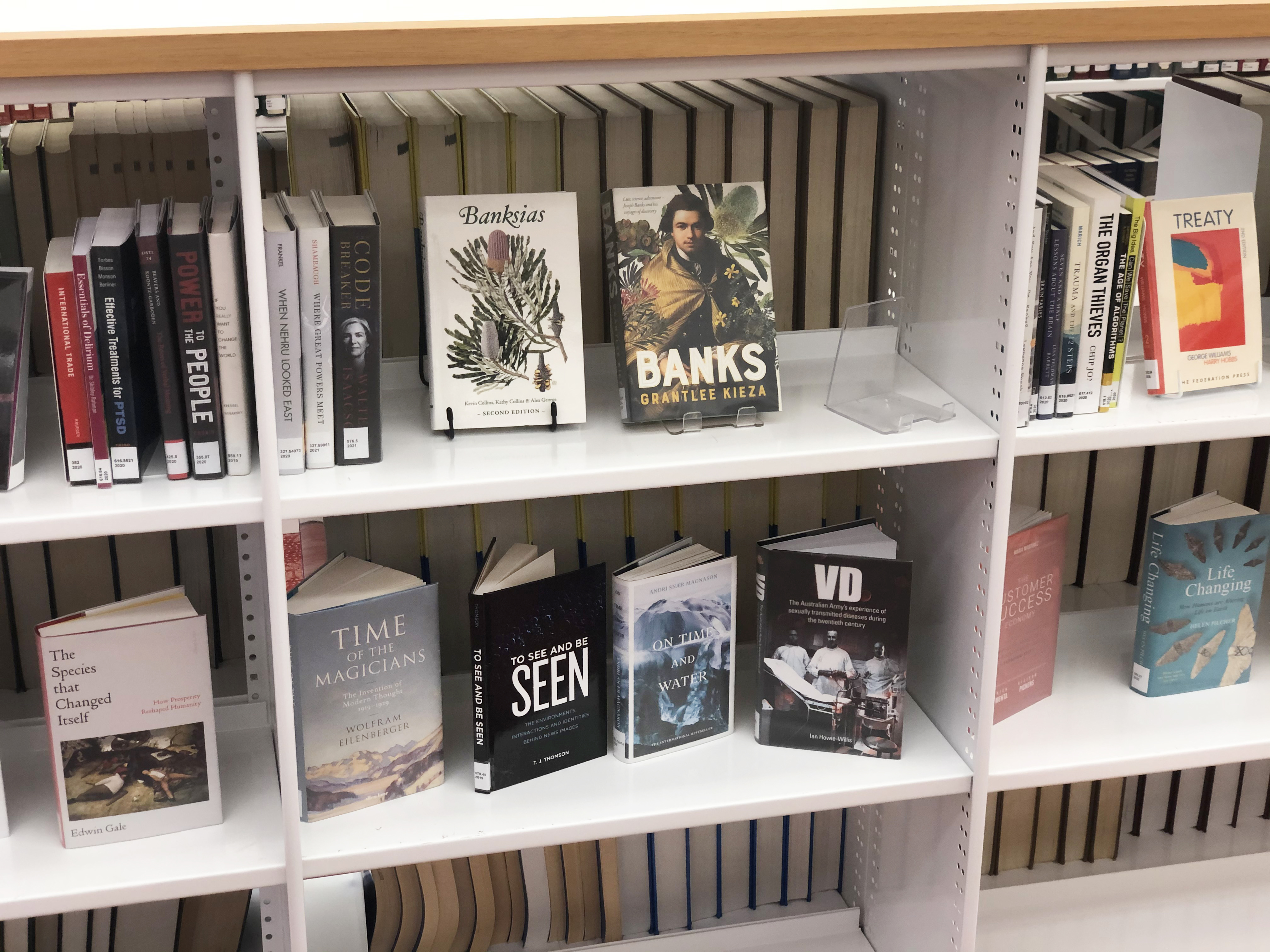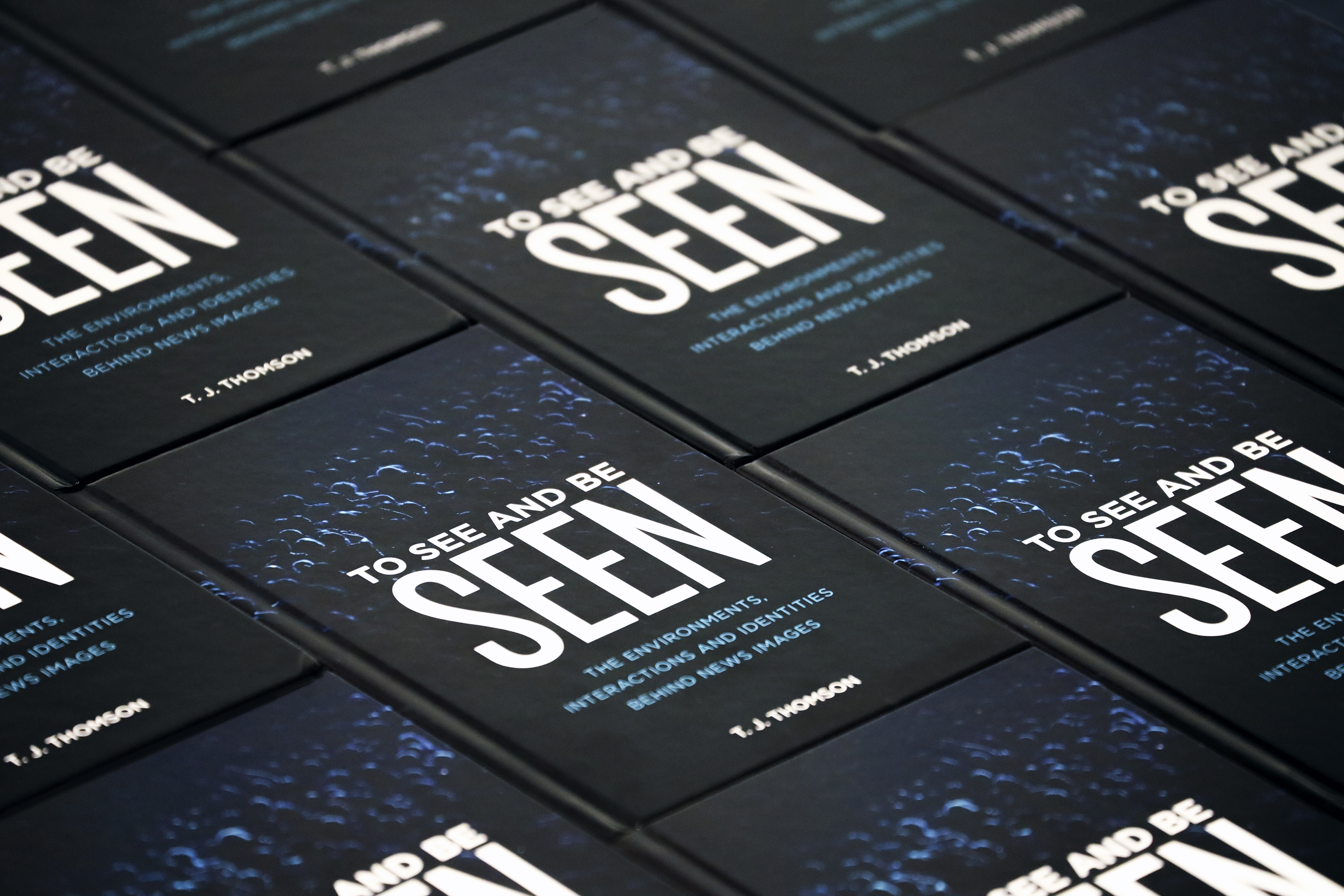
Writing an academic book might very well be one of the biggest projects you undertake in your scholarly career. If you’re disciplined and efficient, you might be able to write the text in under a year but, for it to be useful to your intended audience(s), it has to be “rich,” in the words of my research mentor, Jean Burgess. To operationalize richness, ideally a book should likely be based on multiple years (likely between 3-5) of concentrated study and benefit from multiple empirical studies.
I share in the following paragraphs how I published my first book, what I’ve learned along the way, and what I’ll do differently next time. (This article focuses on scholarly monographs rather than trade publications, textbooks, etc. and acknowledges the process can be different for a first book compared to a subsequent one.)
Book proposal stage:
At this point, you’ll have a topic that addresses a gap, misconception, or uses a novel approach to examine something in a new light. Before drafting the proposal, do your research and identify the different presses out there (university [e.g., NYU Press], commercial [Palmgrave], independent [Rowman & Littlefield], etc.) and get a sense of what they publish and what they don’t.
You can ask advisors or colleagues for their perspectives and it’s never a bad idea to triangulate those to get a diversity of opinions and identify recurring themes. Also be aware of book series and collections that might suit your work. Once you’ve identified several publishers, you can begin to assemble the book proposal. Your identified publishers will most likely have a template available on their websites for you to use.
Most will include the following elements:
- Working title
- Brief synopsis or abstract of the book’s central arguments and themes
- Statement on relevance and applicability
- Chapter-by-chapter outline
- Estimated length (in thousands of words)
- Proposed delivery date
- Proposed market
- Information on the main competing titles and how your proposed book is different
If you’re a first-time author, the publisher will most likely also want to see at least a sample chapter or two. If you’ve already had a book published, some publishers will forego this requirement.
I’ll break down each of these elements a bit more below, as follows:
Working title. Don’t worry if this changes throughout the process (mine did). You’ll often find books with a short and snappy title (or even just a word or two) that can work well for display on the cover and that are accompanied by more descriptive subtitles. As examples, my colleague Nic Suzor’s Lawless: The Secret Rules that Govern Our Digital Lives or Jean Burgess’s and Nancy Baym’s Twitter: A Biography.
Brief synopsis/abstract. Just like with a journal article, situate the topic in the relevant literature it’s based on, identify the gap or main contribution, articulate the methods you used to collect/analyse the data (if your book is empirical), and discuss findings and implications.
Statement of relevance and applicability. Put your marketing hat on here and consider why the average person would be interested in your topic. Here’s the statement I submitted for my To See and Be Seen: The Environments, Interactions, and Identities Behind News Images book:
This book is relevant because it deals with the phenomenon of visual communication, broadly, which is a ubiquitous and powerful, though understudied, area. Human behavior is highly visual, for example, as more than 60 percent of all human communication is nonverbal (Kundu, 1976), and humans are increasingly being exposed to more visual rather than verbal mediated messaging (Lester, 2013). Additionally, considering that billions of personal cameras exist globally that capture more than one trillion images each year, this work has profound implications for the experience of being imaged and what it means for self-representation, identity formation, and public policy debate, as, “at any given moment the accepted report [or image] of an event is of greater importance than the event, for what we think about and act upon is the symbolic report [or image] and not the concrete event itself’” (Ivins, quoted in Szarkowski, 2007, p. 3).
Note that the argument is supported by external evidence and, even if the template doesn’t explicitly call for a reference list or bibliography, it would be appropriate to include one along with in-text citations, where appropriate.
Chapter-by-chapter outline. Carefully craft a paragraph for each chapter of your book that discusses what it covers and why it matters. This allows the commissioning editor to get a sense of the narrative flow and structural organization of the work and how everything hangs together (or doesn’t).
Estimated length. I raised some eyebrows here by initially proposing a 40,000-word book. The standard range, I later found, is between 60,000-100,000 words. Any fewer is a mini book, like a Palgrave Pivot, that your university might not “count” as equivalent to a traditional book and anything longer will likely have to be negotiated.
Proposed delivery date. This will vary depending on your field and the currency of the topic; however, for very fast-changing topics, like social media, I’m told an editor would expect a completed manuscript no later than two years from accepting a proposal. It’s never too early to start the conversation with a publisher. Some editors actually prefer you not to have started writing before you pitch them because they’ll want to have a hand in shaping the proposal and what the book covers and/or they’ll want you to be flexible to the reviewers’ feedback, which can be easier to do before you’ve done too much empirical work.
Proposed market. Is your book suited particularly well for one geographic region or country? Is it comparative and therefore relevant transnationally? What specific subject areas/disciplines would be most interested in your book? Are there any particular courses/units where your book could be used? Are you writing for an undergraduate students? Graduate ones? An audience of your peers?
Information on the main competing titles and how your proposed book is different. Perhaps one of the most critical sections, here’s where you will more fully present an evidence-based argument of the gap in the literature that your book fills (as well as how this book compares to the publisher’s existing catalog). If other scholars have called for work that you propose to address and you can include their calls, those would be welcome additions.
Here’s what I wrote for that section:
Scholars have written extensively about visual media’s potency and how images have the power to topple governments, force resignations, change standards, promote justice, form social bonds, and impart significance (see Burgess, Enzle, & Morry, 2000; Goldberg, 1991; Milgram, 1992; Perlmutter, 1998; and Sontag, 1977). However, while much scholarly work and attention has been focused on visual content, the production of and interactions that influence that content have received considerably less attention.
Scholars, such as Newton (2013) have called for more research on journalists’ subjects and how they behave in front of visual journalists. “We know little about how a photographer’s behavior affects those he or she photographs for the mass media, nor do we understand how people feel when they are photographed in different ways” (p. 67). This study answers that call and provides one of the first empirical glimpses into how people regard the experience of being imaged by such journalists.
This proposal follows on the heels of Ruth Palmer’s Becoming the News: How Ordinary People Respond to the Media Spotlight (published December 2017 by Columbia University Press) and adopts a similar approach, only, instead of examining people who were quoted in the news, as Palmer’s work does, this study examines the experience of people who were visually depicted in the news.
The book complements the publisher’s existing catalogue and titles in it, such as The Mediated Construction of Reality and Media Representation and the Global Imagination; would join the works of other, QUT-affiliated authors, such as Tim Highfield’s Social Media and Everyday Politics, Patrik Wikstrom’s The Music Industry: Music in the Cloud, and Michael Keane’s Creative Industries in China: Art, Design, and Media; and would, along with Martin Hand’s Ubiquitous Photography text (which focuses primarily on image distribution and consumption, rather than production), help represent the visual among the publisher’s current catalog offerings.
You should now have a 10- to 15-page proposal that you can send to the publisher. If they’re interested and if fits within their aims, they’ll send it out for an initial review by two independent scholars who will complete a template that addresses variants of these sections, provides feedback to the author, and also includes a recommendation for the publisher to pursue the proposal further or not. Publishers should specify whether they require exclusive consideration of the proposal or whether you’re free to send multiple proposals (tweaked for each publisher) out simultaneously. There’s no harm in asking if the publisher hasn’t explicitly advised on this.
We’ll assume you receive constructive feedback, are able to incorporate it, and provide the publisher with a revised proposal. They’ll then take that to the publishing board and pitch your proposal to their colleagues, who will vote to determine your manuscript’s fate. If it gets accepted, the publisher will draft a formal contract and share this with you.
Contract and drafting stage:
Congrats on receiving your first book contract. If you’re like me, you’ll view it with a mixture of awe and uncertainty. Without having anything to compare it to, you’ll likely be tempted to accept it directly with a wish that the terms are fair. Temper your excitement at reaching this stage and lean on your colleagues or mentors once more to get their feedback on the terms, which, in my case, included six free copies of the book and between 2.5-7.5 percent of the net receipts, depending on the number of copies sold and the publication formats. I reached out to Jean Burgess and she advised the terms looked standard to her but encouraged me to try and negotiate for at least a portion of the book to be published open access. I asked the publisher whether this would be a possibility and received a favorable response:
We have a “preview widget” functionality on the website, which is a similar thing to Amazon’s “Look Inside.” I think as we advance through the process we can have a conversation about that but short answer is yes, we like for readers to get a sense of the book and the “Introduction” being online makes sense.
Once you’ve agreed upon the terms, your deadline clock starts ticking so get to researching, writing, collecting data, and analysing. As with anything, bite-size pieces are more manageable than trying to tackle the entire project at once.
Pre-publicity stage:
Once you’re within three months from publication, you should start ensuring your publicity and engagement strategy’s wheels are in motion. In retrospect, I think I started this process too late and waited until I got confirmation from my publisher that the book had been published before I started actively promoting it externally. (Your approach might also be influenced by whether your publisher supports a pre-order function.)
Here is my plan and how I tried to engage the public with my scholarship in this instance:
- Institutional promotion. One of my first actions was to get the book listed on institutional websites, such as our Research Centre’s, and to work with my university’s media team to craft a news release. Such releases are distributed via a database and can lead to interview offers, such as this one I did with the ABC. I also added an abstract to my university’s institutional repository. Our research centre’s associate director and head of school also kindly organized two book launches for me and some colleagues who had also just published their own books.
- External academic promotion. I added an entry accompanied by the book’s introduction to ResearchGate.net and to Academia.edu. I added the book to my Google Scholar profile, to my ORCiD profile, and to Mendeley. Several other sites, such as ImpactStory.org, GrowKudos.com, and Scopus, can be linked to your ORCiD and can be updated based on the publications you list on it.
- Libraries. I reached out to relevant libraries (or, in some cases, their representatives reached out to me) to add my work to their collections. For example, the head of libraries at my alma mater, the Missouri School of Journalism, ordered a copy for the School’s journalism library after seeing one of my social media posts. Many other libraries have recommendation forms that you can fill out and make your case for why the book is relevant for its collection. You can keep track of which collections hold your book through its WorldCat listing.
- Alternative platforms and formats. I recorded a 180-second excerpt of my book that I published to Soundcloud and then publicized on my social media accounts. I naively signed away the book’s audio rights when I accepted the contract in 2018 but, since then, have been able to reach an agreement with the publisher to allow me to self-publish it on a platform like ACX, which is distributed on Amazon, Audible and iTunes. (I address in this post some guidance for those wishing to produce their own academic audiobooks.)
- General interest and industry outlets. I pitched an article to The Conversation, which netted several thousand views in 10 countries within a month of its publication. I also successfully pitched articles to specialist publications/outlets, such as the National Press Photographers Association, American Society of Media Photographers, Poynter, and the American Press Institute. I negotiated with the publisher to get a 30-percent discount that I could offer to readers in these specialist audiences and designed a flyer I could distribute at conferences and book launches. I also designed a variety of social media graphics that I could use to promote the book on platforms such as Twitter.

Post-publication stage:
Once your book has been published, you should ensure your publisher’s marketing team has sent copies to the journals/outlets listed on the marketing form you filled out and then you should keep an eye out for any book reviews that roll in (creating a Google Alert with your book’s title can help with this). While you’re doing that, also make note of any relevant book awards your title might be eligible for (I was lucky my book netted the National Communication Association’s 2020 Diane S. Hope Book of the Year Award) and gather any evidence that might that might be useful in applying for such awards.
Lastly, to keep the conversation going during production and beyond publication, monitor current events and, as relevant, make connections between those and the topics you tackle in your book.
One of the best examples I’ve seen of this comes from my colleagues who wrote Instagram: Visual Social Media Cultures. They do a phenomenal job of posting original, relevant content that corresponds with the platform’s latest developments while also amplifying others’ voices to provide diverse and unique perspectives.
